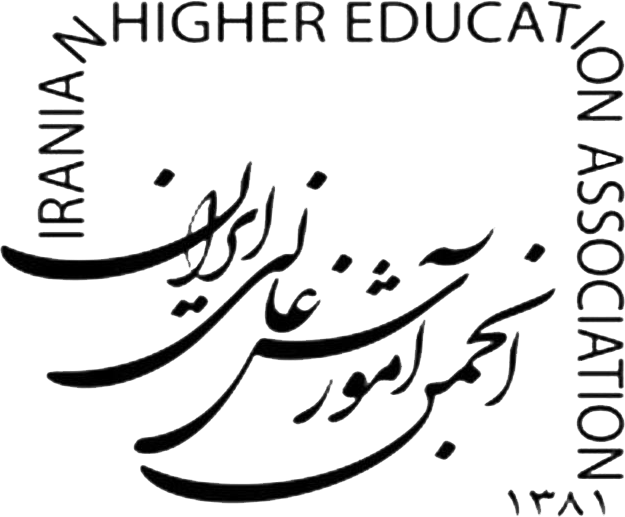Site Statistics
Publication statistics
Journal volumes: 16
Journal issues: 58
Articles views: 2018327
Articles downloads: 708393
Total authors: 1044
Unique authors: 830
Repeated authors: 214
Repeated authors percent: 20
Submitted articles: 2048
Accepted articles: 387
Rejected articles: 756
Published articles: 357
Acceptance rate: 18.9
Rejection rate: 36.91
Average Time to Accept: 310 days
Average Time to First Review: 111.4 days
Average Time to Publish: 27.1 days
Last 3 years statistics:
Submitted articles: 246
Accepted articles: 66
Rejected articles: 15
Published articles: 66
Acceptance rate: 26.83
Rejection rate: 6.1
Average Time to Accept: 135 days
Average Time to First Review: 21.2 days
Average Time to Publish: 63.7 days
Newsletter subscription
Enter your email address to have site news and announcements delivered directly to your inbox.
Iranian Higher Education
Journal of Iranian Higher Education Country of publication: Iran
Publisher and license: Iranian Higher Education Association
ISSN: 2008-8000
Printing status: printed and electronic
Frequency: Quarterly
Magazine language: Persian with English Extended abstract
The initial review period of articles: less than 10 days
Average time from judging to academic admission: Less than 3 months
Arbitration Policy: Double-blind peer review
Minimum reviewers for each article: 2 reviewers
Articles Finder Software: Samim Noor
How to issue a certificate of acceptance and judging: Electronic
Publishing fee: The cost of expert evaluation and refereeing of articles: 5000,000 Rials and
The cost of printing and publication is 1,000,000 Rials
Journal type: scientific-research
Impact factor: 0.313
Free and open access to articles: access to articles and their use are free
Indexed: Yes. All the articles published in Journal of Iranian Higher Education in Google Scholar scientific database, ACADEMIA international specialized database, LinkedIn scientific page, ISC World of Islam citation database, Magiran, Nurmagz, comprehensive humanities portal (ensani.ir), scientific information center system Iran (SID) and Civilica scientific database are indexed and have codes and identifiers.
All articles of this publication have a digital identifier of objects (DOR)
In publishing articles, the journal follows the rules of COPE or the Committee on Publication Ethics.
Contact us: journal.iheagmail.com
The percentage of acceptance in 1401: 7%
Publisher and license: Iranian Higher Education Association
ISSN: 2008-8000
Printing status: printed and electronic
Frequency: Quarterly
Magazine language: Persian with English Extended abstract
The initial review period of articles: less than 10 days
Average time from judging to academic admission: Less than 3 months
Arbitration Policy: Double-blind peer review
Minimum reviewers for each article: 2 reviewers
Articles Finder Software: Samim Noor
How to issue a certificate of acceptance and judging: Electronic
Publishing fee: The cost of expert evaluation and refereeing of articles: 5000,000 Rials and
The cost of printing and publication is 1,000,000 Rials
Journal type: scientific-research
Impact factor: 0.313
Free and open access to articles: access to articles and their use are free
Indexed: Yes. All the articles published in Journal of Iranian Higher Education in Google Scholar scientific database, ACADEMIA international specialized database, LinkedIn scientific page, ISC World of Islam citation database, Magiran, Nurmagz, comprehensive humanities portal (ensani.ir), scientific information center system Iran (SID) and Civilica scientific database are indexed and have codes and identifiers.
All articles of this publication have a digital identifier of objects (DOR)
In publishing articles, the journal follows the rules of COPE or the Committee on Publication Ethics.
Contact us: journal.iheagmail.com
The percentage of acceptance in 1401: 7%
- Studying the Performance Evaluation Process of Faculty Members in Iran Based on Purpose and Method :A Systematic Review
Mohammad Mahdi Ahmadi, Zahra Sabbaghian, Narges Hasan Moradi, Bahar Noorzad - Assessing the Status of Critical Thinking Skills in Iranian Universities:
A Systematic Review of Two Decades (2002–2024)
Elaheh Rahmani, Somayeh Nouraie - Analysis of the Status of Institutional Research in Universities Affiliated with the Academic Center for Education, Culture and Research (ACECR)
Ali Ali Khorsandi Taskoh, laleh Shakour Shahabi, Seyed Hadi Marjaei, Vadood Ghasem Talebi - Identifying the Dimensions and Components of Economic annex in University Administration
Saiedeh Mansouri, Vahid Mehrabani, Rahmatolah Alahyari, Hamidreza Yazdani - Key Components of Strategic Planning in Higher Education: A Review of Global Experiences
hamid khosravi, Jamileh Sadat at Alamolhoda, Mahmoud Abolghasemi, Morteza Rezaeizadeh - A Comparative Analysis of the Productivity of Comprehensive State Universities in Tehran and in Other Provinces Based on CCR and BCC Models Article
Masoumeh baraniBiranvand, jamal Fathollahi, Seyyed Mohammad Baqer najafi, azad khanzadi
- Year 2025
- Year 2025
- Year 2024
- Year 2023
- Year 2022
- Year 2021
- The Pedagogy of Shock in Bill Readings’ Thought
Mohammad Yamanidouzi Sorkhabi - Dramaturgy as Research: A Comparative Study of Postgraduate Theses in the Field of Theatre Studies in Iran and the United Kingdom
ali Hajimollaali - The University and the Transfer of Ideas to Society:A Community-Oriented Reading of Intra-Organizational Mechanisms in Iranian Public Universities
Mohamad Seydali, Hamid FarhadiRad, Hojatolah Darafsh, Yadollah Mehralizadeh - A Systematic Review of the Mirror of Iranian University Rankings: Challenges, Shortcomings, and Pathways for Institutional Reconstruction in Higher Education
amir akbarisarcheghaei, jamal salimi, Ali Aminibagh - Neoliberal-Ideological Governmentality: Discursive Power and the University in Iran
Kayvan Ghaderi, Khalil Gholami, Yahya Maroofi - Identifying the Drivers of Financial Resources Development for Skills Education Units with the Aim of Designing a Prospective Model: A Systematic Review of Meta-Synthesis
Article Type: Review
Hamid Reza Motaghi, Abolghasem Naderi, Gholamreza Geraei nejad, Mitra Ezati - A Skilled-Based Education Model in Higher Education
leila ghoraeian, Soghra Afkaneh, Asghar zamani
Word cloud

Iranian Higher Education
Current:
Print ISSN:
2008-8000
Online ISSN:
2008-8000
Director-in-Charge:
Dr.Ebrahim Salehi Omran
Editor-in-Chief:
Dr. Mohammad Yamani









